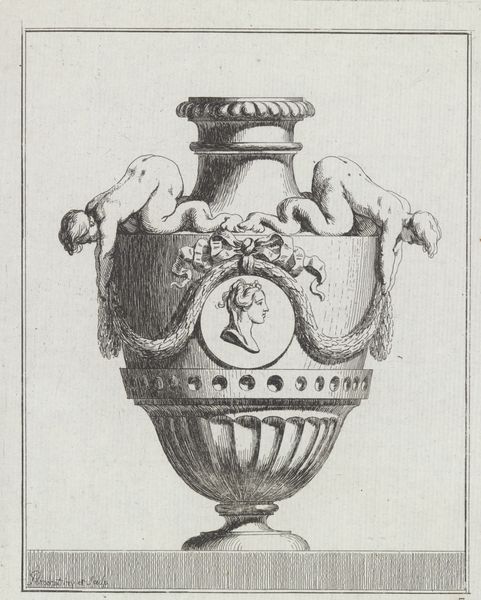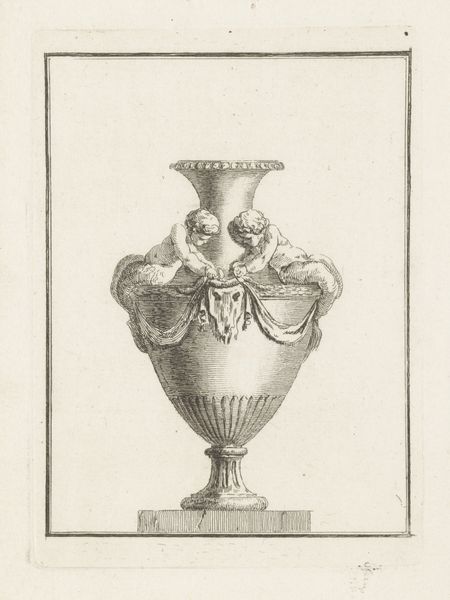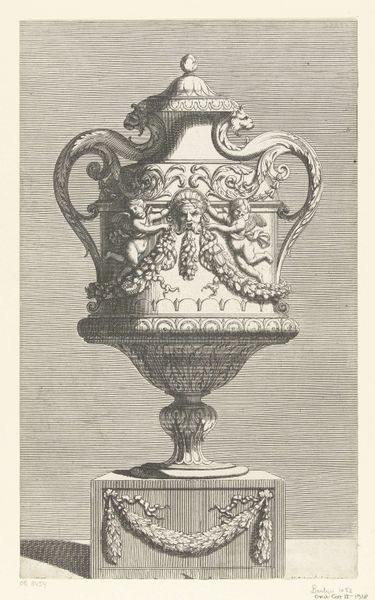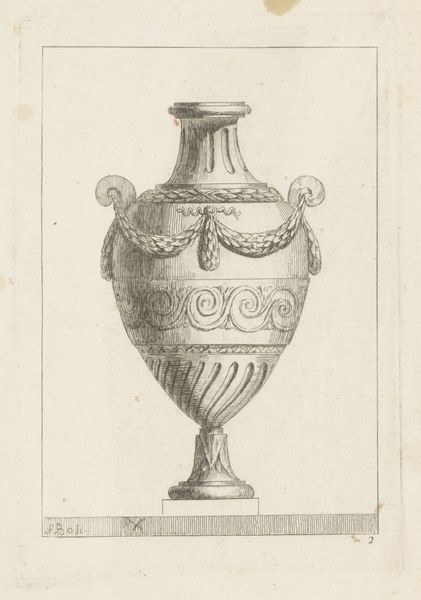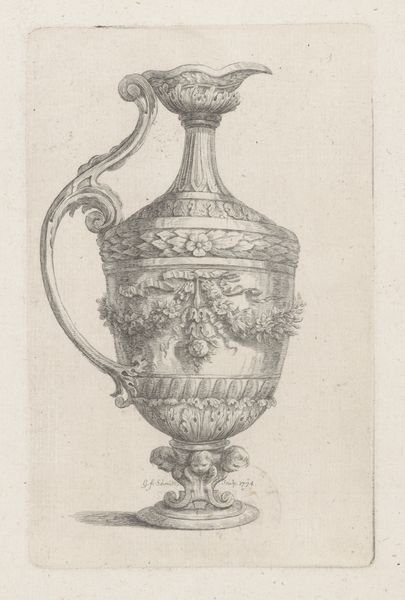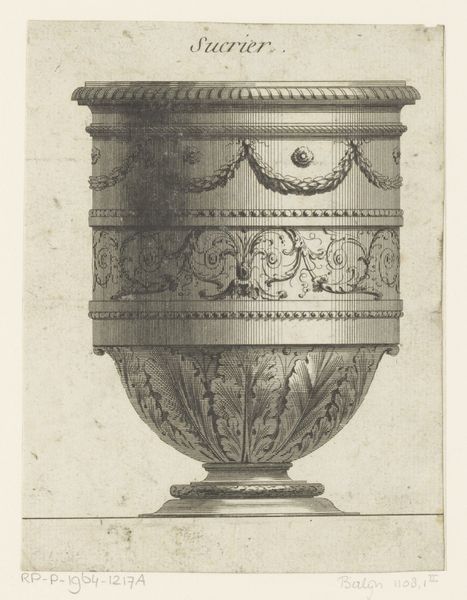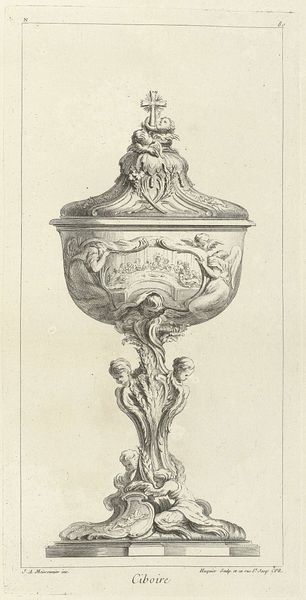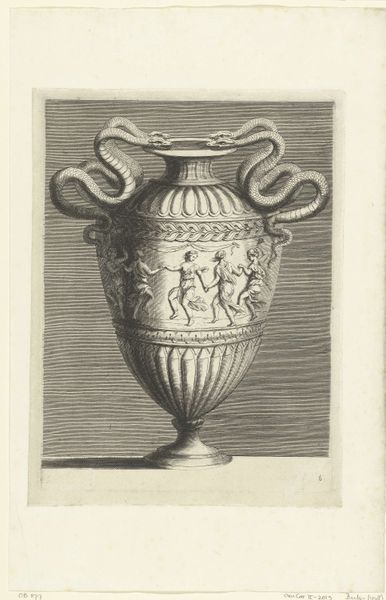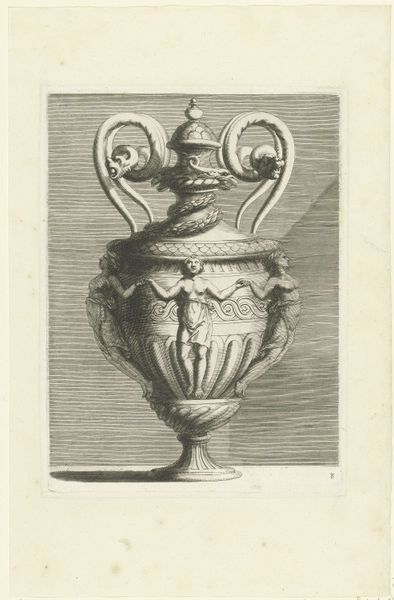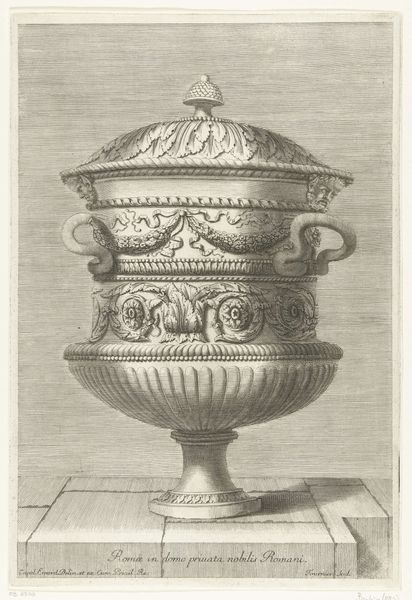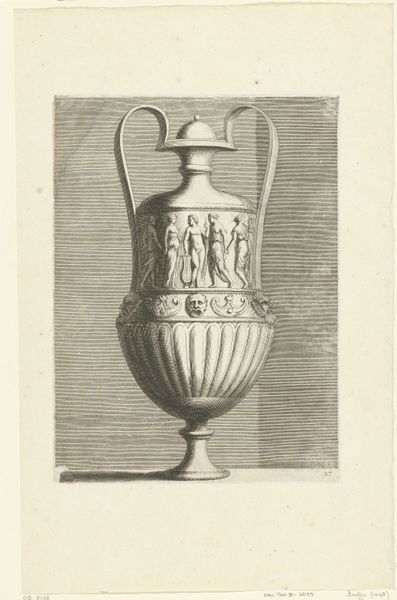
Dimensions: height 172 mm, width 118 mm
Copyright: Rijks Museum: Open Domain
Curator: Allow me to introduce you to "Vaas met maskers," or "Vase with Masks," an engraving by Juste Nathan Boucher, likely created between 1755 and 1782. It's part of the Rijksmuseum's collection. Editor: It’s fascinating how the severe symmetry is undercut by those… unsettling faces. I find it oppressive; the masks are lifeless, pinned in place. Like captured entities, perhaps, rather than simple decoration. Curator: That reading is intriguing, given how classical forms are often read as celebrations of reason. The vase form itself is ancient, a symbol of holding or containing. The masks could be interpreted as echoes of Greek theatrical traditions or as decorative motifs common during the Baroque period. Editor: But that's exactly my point. The very act of confining these expressions, of transforming human visages into mere ornamental features, speaks volumes about power dynamics and the historical subjugation inherent in classical forms. Notice how the features are so standardized—are these individuals or archetypes? Curator: Standardized perhaps, yet faces hold deep meaning. They represent human attributes: sorrow, happiness, anger… Putting faces on a vessel turns it from a static container into something almost alive, bearing witness to the dramas that might unfold around it. This infusion of emotion is interesting considering how "rational" neoclassicism sought to strip feeling away. Editor: Interesting. So, the piece becomes a study of conflict? The containment of complex emotion by the guise of harmony and rational design. The aesthetic is like a decorative prison, one that disguises oppressive structures with pleasing forms, perpetuating inequality even in beauty. Curator: It presents a puzzle, at the very least. The classical motifs point towards continuity, an assertion of cultural inheritance. How the mask and vessel relate has a long cultural pedigree with shifting, nuanced interpretations. It reminds us that cultural forms can carry the weight of meaning. Editor: Indeed. It leaves me thinking about how so many of these older images still permeate contemporary power structures, dictating who and what is seen as acceptable or desirable, beautiful or disposable. These decorative images have teeth.
Comments
No comments
Be the first to comment and join the conversation on the ultimate creative platform.
